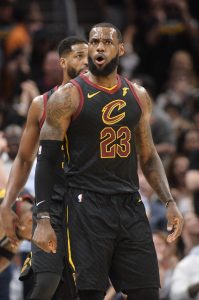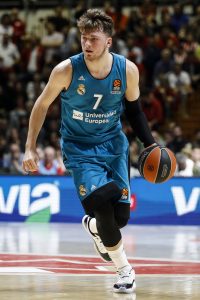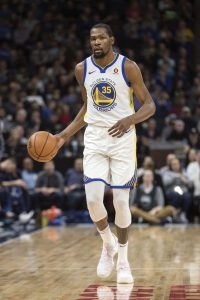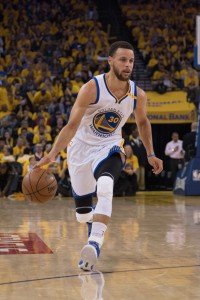As we did with last year’s offseason trades and the in-season swaps from 2017/18, Hoops Rumors will be keeping track of all of the trades made this offseason, right up until the start of the 2018/19 season, updating this post with each transaction.
Trades are listed here in reverse chronological order, with the latest on top. So, if a player has been traded multiple times, the first team listed as having acquired him is the one that ended up with him.
If a trade has not yet been formally finalized, it won’t be listed here. So, if a deal agreed upon during the draft in June isn’t made official until the new league year, it will show up on our list after it’s completed in July.
For our full story on each trade, click on the date above it. For more information on the specific conditions dictating if and when draft picks involved in these deals will actually change hands, be sure to check out RealGM.com’s breakdown of the details on traded picks.
Here’s the full list of the NBA’s 2018 offseason trades:
2018/19 League Year
- Bucks acquire Jodie Meeks, the Wizards’ 2020 second-round pick (46-60 protected), and cash ($1.5MM).
- Wizards acquire the Wizards’ 2020 second-round pick (top-55 protected).
- Pelicans acquire Wesley Johnson.
- Clippers acquire Alexis Ajinca.
- Suns acquire Ryan Anderson and the draft rights to De’Anthony Melton.
- Rockets acquire Brandon Knight and Marquese Chriss.
- Cavaliers acquire Sam Dekker, the draft rights to Renaldas Seibutis, and cash ($1,247,494).
- Clippers acquire the draft rights to Vladimir Veremeenko.
- Mavericks acquire Chinanu Onuaku, cash ($1,544,951), and the right to swap the Warriors’ 2020 second-round pick for the Rockets’ 2020 second-round pick.
- Rockets acquire the draft rights to Maarty Leunen.
- Hawks acquire Carmelo Anthony, Justin Anderson, and the Thunder’s 2022 first-round pick (top-14 protected).
- Thunder acquire Dennis Schroder and Timothe Luwawu-Cabarrot.
- Sixers acquire Mike Muscala.
- Magic acquire Jarell Martin and cash ($1,037,980).
- Grizzlies acquire Dakari Johnson and the draft rights to Tyler Harvey.
- Thunder acquire Abdel Nader and cash ($450K).
- Celtics acquire Rodney Purvis.
- Clippers acquire Johnathan Motley (two-way) and the draft rights to Renaldas Seibutis.
- Mavericks acquire the draft rights to Maarty Leunen and cash ($50K).
- Suns acquire Richaun Holmes.
- Sixers acquire cash ($1MM).
- Magic acquire Dakari Johnson and cash ($1,978,242).
- Thunder acquire Rodney Purvis.
- Nets acquire Jared Dudley and the Suns’ 2021 second-round pick (top-35 protected).
- Suns acquire Darrell Arthur.
- Raptors acquire Kawhi Leonard, Danny Green, and cash ($5MM).
- Spurs acquire DeMar DeRozan, Jakob Poeltl, and the Raptors’ 2019 first-round pick (top-20 protected).
- Grizzlies acquire Garrett Temple.
- Kings acquire Ben McLemore, Deyonta Davis, the Grizzlies’ 2021 second-round pick, and cash ($1,544,951).
- Nets acquire Kenneth Faried, Darrell Arthur, the Nuggets’ 2019 first-round pick (top-12 protected), and the Nuggets’ 2020 second-round pick.
- Nuggets acquire Isaiah Whitehead.
- Hawks acquire Jeremy Lin, the Nets’ 2025 second-round pick, and the right to swap 2023 second-round picks with the Nets.
- Nets acquire the rights to Isaia Cordinier and the Trail Blazers’ 2020 second-round pick (top-55 protected).
- Magic acquire Timofey Mozgov and Jerian Grant.
- Hornets acquire Bismack Biyombo, either the Wizards’ or Nuggets’ 2019 second-round pick (whichever is less favorable; from Magic), and either the Nets’ or Knicks’ 2020 second-round pick (whichever is less favorable; from Magic).
- Bulls acquire Julyan Stone.
- Sixers acquire Wilson Chandler, the Nuggets’ 2021 second-round pick, and the right to swap 2022 second-round picks with the Nuggets.
- Nuggets acquire cash ($110K).
- Thunder acquire the draft rights to Hamidou Diallo (No. 45 pick).
- Hornets acquire the Thunder’s 2019 second-round pick and cash ($243K).
- Agreed upon in June
- Nets acquire Dwight Howard.
- Hornets acquire Timofey Mozgov, the draft rights to Hamidou Diallo (No. 45 pick), the Nets’ 2021 second-round pick, and cash ($5MM).
- Agreed upon in June.
- Lakers acquire the draft rights to Isaac Bonga (No. 39 pick).
- Sixers acquire the Bulls’ 2019 second-round pick and cash ($1.5MM).
- Agreed upon in June.
2017/18 League Year
- Wizards acquire Austin Rivers.
- Clippers acquire Marcin Gortat.
- Rockets acquire the draft rights to Vince Edwards (No. 52 pick).
- Jazz acquire cash ($1.5MM).
- Sixers acquire the draft rights to Shake Milton (No. 54 pick).
- Mavericks acquire the draft rights to Ray Spalding (No. 56 pick) and Kostas Antetokounmpo (No. 60 pick).
- Nuggets acquire the draft rights to Jarred Vanderbilt (No. 41 pick).
- Magic acquire the draft rights to Justin Jackson (No. 43 pick) and either the Nuggets’ or Wizards’ 2019 second-round pick (whichever is less favorable).
- Note: The Nuggets’ 2019 second-round pick would be sent to Milwaukee if it falls between 56-60, in which case the Magic would receive the Wizards’ second-rounder.
- Pistons acquire the draft rights to Khyri Thomas (No. 38 pick).
- Sixers acquire the Pistons’ 2021 second-round pick and the Pistons’ 2023 second-round pick.
- Trail Blazers acquire the draft rights to Gary Trent Jr. (No. 37 pick).
- Kings acquire either the Timberwolves’ or Lakers’ 2019 second-round pick (whichever is more favorable), the Heat’s 2021 second-round pick, and cash ($1.5MM).
- Hornets acquire the draft rights to Devonte’ Graham (No. 34 pick).
- Hawks acquire the Hornets’ 2019 second-round pick and the Hornets’ 2023 second-round pick.
- Suns acquire the draft rights to Mikal Bridges (No. 10 pick).
- Sixers acquire the draft rights to Zhaire Smith (No. 16 pick) and the Heat’s 2021 first-round pick (unprotected).
- Clippers acquire the draft rights to Shai Gilgeous-Alexander (No. 11 pick)
- Hornets acquire the draft rights to Miles Bridges (No. 12 pick), the Cavaliers’ 2020 second-round pick, and the Clippers’ 2021 second-round pick.
- Mavericks acquire the draft rights to Luka Doncic (No. 3 pick).
- Hawks acquire the draft rights to Trae Young (No. 5 pick) and the Mavericks’ 2019 first-round pick (top-5 protected).


 1. What will Durant’s new contract look like?
1. What will Durant’s new contract look like?